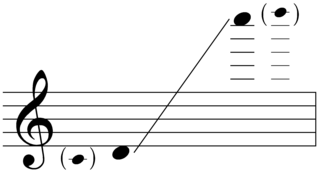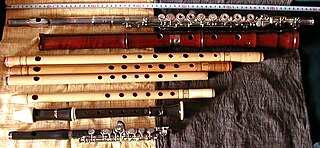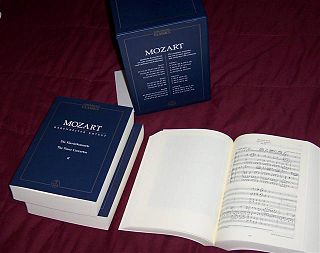
A sackbut is a type of trombone from the Renaissance and Baroque eras, characterised by a telescopic slide that is used to vary the length of the tube to change pitch. Unlike the earlier slide trumpet from which it evolved, the sackbut possesses a U-shaped slide, with two parallel sliding tubes, which allows for playing scales in a lower range.
In music, variation is a formal technique where material is repeated in an altered form. The changes may involve melody, rhythm, harmony, counterpoint, timbre, orchestration or any combination of these.

Mozart's Clarinet Concerto in A major, K. 622, was written in October 1791 for the clarinetist Anton Stadler. It consists of three movements, in a fast–slow–fast succession:
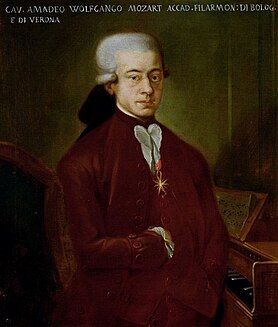
The Sinfonia Concertante for Violin, Viola and Orchestra in E-flat major, K. 364 (320d), was written by Wolfgang Amadeus Mozart.

The Symphony No. 38 in D major, K. 504, was composed by Wolfgang Amadeus Mozart in late 1786. It was premiered in Prague on January 19, 1787, during Mozart's first visit to the city. Because it was first performed in Prague, it is popularly known as the Prague Symphony. Mozart's autograph thematic catalogue records December 6, 1786, as the date of completion for this composition.

The Piano Concerto No. 21 in C major, K. 467, was completed on 9 March 1785 by Wolfgang Amadeus Mozart, four weeks after the completion of the previous D minor concerto, K. 466.
The Violin Concerto No. 3 in G major, K. 216, was composed by Wolfgang Amadeus Mozart in Salzburg in 1775. Mozart was only 19 at the time.
Symphony No. 20 in D major, K. 133, was composed by Wolfgang Amadeus Mozart in July, 1772, when Mozart was sixteen years old. This symphony is one of many written during the period Mozart stayed in Salzburg, between two trips to Italy. Compared to other symphonies Mozart wrote in this period, the scoring is extravagant, featuring two trumpets in addition to the standard oboes, horns, and strings. The key of D major, which is a key often reserved for ceremonial music, is well suited to the presence of these trumpets.
Wolfgang Amadeus Mozart's Clarinet Quintet, K. 581, was written in 1789 for the clarinetist Anton Stadler. A clarinet quintet is a work for one clarinet and a string quartet. Although originally written for basset clarinet, in contemporary performances it is usually played on a clarinet in A or B-flat for convenience's sake. It was Mozart's only completed clarinet quintet, and is one of the earliest and best-known works written especially for the instrument. It remains to this day one of the most admired of the composer's works. The quintet is sometimes referred to as the Stadler Quintet; Mozart so described it in a letter of April 1790. Mozart also wrote a trio for clarinet, viola and piano for Stadler, the so-called Kegelstatt Trio, in 1786.
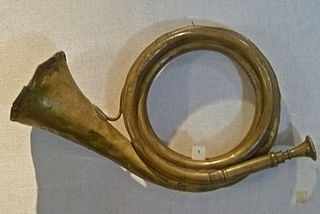
The post horn is a valveless cylindrical brass instrument with a cupped mouthpiece. The instrument was used to signal the arrival or departure of a post rider or mail coach. It was used especially by postilions of the 18th and 19th centuries.
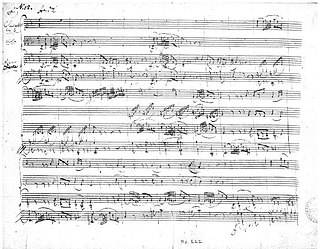
The Kegelstatt Trio, K. 498, is a piano trio for clarinet, viola and piano in E-flat major by Wolfgang Amadeus Mozart.

The Piano Concerto No. 27 in B♭ major, K. 595, is Wolfgang Amadeus Mozart's last piano concerto; it was first performed early in 1791, the year of his death.

The Piano Concerto No. 22 in E♭ major, K. 482, is a concertante work for piano, or fortepiano, and orchestra by Wolfgang Amadeus Mozart, composed in December 1785.
Alexander Scriabin's Symphony No. 3 in C minor, entitled Le Divin Poème, was written between 1902 and 1904 and published in about 1904.
"Sleigh Ride" is a popular light orchestra standard composed by Leroy Anderson. The composer had the original idea for the piece during a heat wave in July 1946 and finished the work in February 1948. It was originally instrumental; the lyrics, where someone asks another to join them for a ride in a sleigh, were written by Mitchell Parish in 1950. The orchestral version was first recorded in 1949 by Arthur Fiedler and the Boston Pops Orchestra. "Sleigh Ride" was a hit record on RCA Victor Red Seal 49-0515 / 10-1484, and has become one of the orchestra's signature songs. The 45 rpm version was originally issued on red vinyl. The Pops has also recorded the song with John Williams, their conductor from 1979 to 1995, and Keith Lockhart, their current conductor.
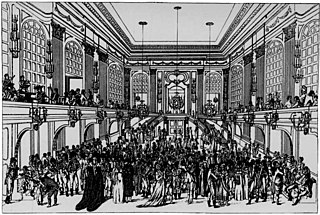
The composer Wolfgang Amadeus Mozart wrote a great deal of dance music, both for public use and as elements of larger works such as operas, quartets, and symphonies. According to the reminiscences of those who knew him, the composer himself enjoyed dancing very much; he was skillful and danced often.
Wolfgang Amadeus Mozart's first four sonatas for keyboard and violin, K. 6–9 are among his earliest works. These were composed by a budding Mozart between 1762 and 1764. They encompass several of Mozart's firsts as a composer: for example, his first works incorporating the violin, his first works with more than a single instrument, his first works in more than one movement and his first works in sonata form. In fact, previous to this, all his works had been short solo-pieces for the harpsichord.

The Cello Concerto No. 1 was written by Philip Glass in 2001. It was one of the first concerti of the twenty-first century. The piece was commissioned by William and Rebecca Krueger, friends of both the cellist Julian Lloyd Webber and the conductor Yu Long in celebration of Lloyd Webber's 50th birthday and the first anniversary of Maestro Yu's China Philharmonic Orchestra. The work was premiered by Lloyd Webber with Long Yu conducting the China Philharmonic during the 2001 Beijing Music Festival, and attracted significant attention as the first time the work of a major western composer had its world premier in China. A typical performance takes about 30 minutes. The work is paired with the Concerto Fantasy for Two Timpanists and Orchestra as part of Glass' Concerto Project, a series of collected concerti by the composer. The cello concerto is among the most famous of Glass' works for a solo instrument.





